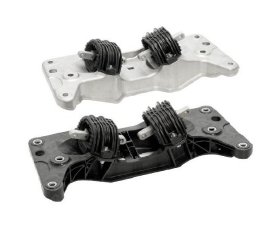Thursday, December 17, 2009
The Art of Listening
The Art of Listening
By Swami Chinmayananda
We can learn a lot from every event in life. Just as the honeybee has the special instrument
(proboscis) to extract the very essence in the flowers, human beings have a special faculty (power of
discrimination) to maintain the quality of life by learning the art of true listening.
Listening is the channel most often used for "learning." It is a vital communication function; it
improves our ability of understanding, self-awareness and self-application.
Effective listening is not mere "hearing."
In fact, we all know from our personal experiences that mere
hearing – or poor listening – can very well result in:
· Frustration
· Indifference
· Misunderstandings
· Misleading judgments
· Embarrassment
· Poor human relations and
· Many other psychological blocks and maladjustments
Yes, listening has become almost a forgotten skill. Very often we are led to believe that speaking
represents action and power, while listening connotes weakness and apathy. We find that resistance
to listening tends to be the cultural norm!
Sometimes, we pay attention to what interests us, and block out larger areas of reality. Another block
to listening occurs when we form an opinion about the level of what is being said. We label the
information ahead of time as unimportant, too boring, too complex, or as being nothing new. Due to
such internal distractions, we become biased listeners, and our minds are tuned out rather than tuned
in!
Some people fake attention – just to please the speaker! Some have the habit of interrupting when
others are talking. Personal problems sometimes manage to creep into our minds – diverting our
attention – while someone else is talking. Fatigue is another limiting factor in listening, as listening
takes concentration and effort. It is easier to daydream and let our minds become preoccupied when
our energy level is low.
A semantic barrier is very common in most of us. No two persons have exactly the same meaning for
the same word or expression. We evaluate an individual's competence and motivation through our
semantic filters. We make judgments about people, based on our varied beliefs, knowledge, education,
upbringing, what we understand, and what we see and perceive.
In short, the blind spots are within us. The angularities or the changing moods of the mind are
barriers to effective listening. The barriers are caused by:
· Faulty memories
· Shades of ego
· Tendencies and attitudes
· Beliefs
· Images of past experiences
· Prejudices of the past
· Likes and dislikes
· Expectations and anxieties for the future
Only when we become aware of our blind spots will we be able to understand and reshape our beliefs,
values, and attitudes. Therefore, it is necessary to train the mind to widen its perspective and see
things in an objective way.
Let us have a "listening mind" – a mind that is open, unprejudiced, objective, alert, attentive, and
relaxed.
Let us have a "balanced outlook" – enjoying spiritual strength, inner stability, mental beauty, and
physical perfection.
--------------------
Tuesday, December 15, 2009
BMW 5 Series gets First Ever Plastic Transmission Cross Beam
Tomado de http://www.azom.com/news.asp?newsID=20092
New applications for lightweight components are constantly being found in the automotive sector. For the first time, a transmission cross beam has been manufactured of the plastic polyamide and used as standard in the new BMW 5 Series Gran Turismo 550i. By choosing Ultramid A3WG10 CR instead of aluminum, it was possible to reduce the weight of the part by 50%.
 |
| The first transmission cross beam made of plastic (front part) has been developed by ContiTech Vibration Control in close cooperation with BMW and BASF. It is applied as a standard in the new BMW 5 Series Gran Turismo 550i. By using Ultramid® A3WG10 CR instead of aluminum, it was possible to reduce the weight of the part by 50% (rear part). Photo: ContiTech Vibration Control, 2009 |
The cross beam, which was developed by ContiTech Vibration Control in close cooperation with BMW and BASF, received an award just a few days after standard production of the vehicle got started: In the Industry category, it landed the first place Innovation Award conferred by the Federation of Reinforced Plastics (AVK).
The transmission cross beam - a structural component designed to withstand high load - is the direct link to the engine-transmission mount. It contributes to the overall rigidity of the vehicle and supports the forces and torque of the engine-transmission unit. ContiTech produces the component from exceptionally strong polyamide in an injection molding process. With the help of BASF's ULTRASIM development instrument, it was possible to reduce the weight by 1 kg compared to the same component made of metal - a milestone in lightweight car construction. In addition to weight reduction, development focused on optimum vehicle acoustics and crash safety. As proven by elaborate testing, these two goals were achieved.
Furthermore, the developers managed to ideally adapt the component to the available installation space. The plastic transmission cross beam also fully satisfies the high temperature requirements that result from the proximity to the exhaust system. Another advantage is better recyclability. ContiTech thus contributes to sustainability with this product as well.
Posted Dec 15, 2009
Related News
- BASF Neopor Insulation Material being Used to Produce Decorative Interior Surfaces
- New Plastic Film Protects Pharmaceuticals Better Against Oxidation
- BASF Focus on Environmentally Friendly Products and Processes at Indian Leather Fair
- Packaging Community Moves towards More Environmentally Friendly Products
- BASF Introduce Eco-Friendly Packaging for Crop Protection Products
- BASF Starts Production at Its New Intermediates Plant
- Expanded Polystyrene Provides Thermal Insulation for Back-Ventilated Curtain Facades
- BASF Launches Polyurethane Solutions Brand
- BASF Offers a New Biodegradable Plastic
- On-Site Tablet Coating System which Enables Custom Colours







